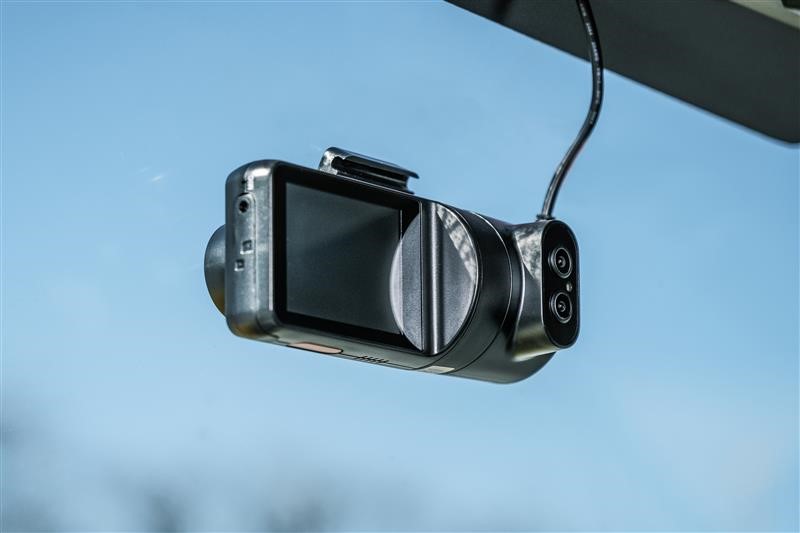Driver buy-in, best practices ensure smooth video rollout
As road- and driver-facing cameras continue to make their way into trucks, getting drivers on board and maintaining best practices will help fleets to properly utilize the technology.
Addressing privacy concerns is key to obtaining driver buy-in when rolling out video technology in trucks. Carriers must reassure drivers that video is not on when they are in the sleeper, said Gary Falldin, senior director of industry solutions at Trimble during the Truckload Carriers Association’s Truckload 2024 in Nashville, Tenn.
Trimble allows drivers to hit the stop button when the truck is stopped. It says the camera is not recording and shows a red symbol. “But once the truck is moving more than 2 mph (3.2 km/h) the camera comes on and there’s nothing the driver can do about it,” he said.

Testimonials from drivers who have had crashes and been exonerated by video are a good way to address concerns. When they realize this helps them in litigation, they are more accepting of the technology.
Falldin said the big advantage of the driver-facing camera is that it can show the driver was attentive. Secondly, it helps train drivers to stop bad behaviors like using cellphones while driving or not using seatbelts.
Address privacy concerns
A carrier’s drivers are their best advocates, added Randy Luckow, vice-president of safety, Dart Transit. Find an informal leader, he advised, who can explain the technology during orientation for new employees, or at monthly training sessions.
Luckow noted that after privacy concerns are addressed, it is important to add into the safety policy that cameras should not be covered.
In some cases, where video recording is only trigged by certain incidents, drivers must be trained on how to record video. This can be helpful when a driver arrives at a customer and the gate it locked. They can record the incident as evidence in case the customer says it was open and the driver was late.
Road rage
Luckow said cameras used in his company’s trucks have a digital video recording function. Sometimes drivers are subjected to road rage incidents. “Even if they record after the incident, we have a timeline to go back to and see what happened,” he said.
It is also important for the driver to understand what automatically triggers video recordings. It could be hard braking incident, collision mitigation events or roll stability issues. The safety team must emphasize that the drivers, on most occasions, can control the number of videos being sent to the office.
There should also be a limit on who can watch, download and transfer the videos. “You don’t want someone to pass a video around saying look at this goofy thing that happened, or post it on social media,” Luckow said.
Who can access recordings?
Carriers must decide who has access to the videos, for example, the safety team, or fleet and operations managers, or upper management.
Falldin said staff must stay up to date on the videos. If incidents are taking place and the carrier is not aware of them, plaintiff lawyers will jump on that. “Make sure you review your videos on a timely basis,” he said.
If driver coaching is needed, it must be documented that it has been done. Get acknowledgement from the driver that they have watched the video and learned from it, and what techniques were used for education.
Communicating with drivers
Communication is key, and carriers should ensure that people who are talking to drivers know how to do so. Roleplay training will help improve and don’t take it for granted your team knows how to communicate properly.
Actionable numbers are also important when using video technology. “A driver who is on the road for 100 miles and has three events is more of a risk than one who is on the road for 1,000 miles and three events,” Falldin said.
Luckow added that carriers should also pay attention to video retention policy. Carriers must work with their legal team and claims department. They can advise on how long to hang on to a video after a crash or accident. This is important because if you operate in different provinces, states and countries, because there are different statutes of limitations.
Have your say
This is a moderated forum. Comments will no longer be published unless they are accompanied by a first and last name and a verifiable email address. (Today's Trucking will not publish or share the email address.) Profane language and content deemed to be libelous, racist, or threatening in nature will not be published under any circumstances.